Do you have unsightly rust stains in or around your home? Are you looking for a trustworthy rust remover? Whink Rust Stain Remove seems to be everyone’s favorite rust remedy.
Naturally, we wanted to find out how big of a mess this brown-bottled solution could handle. If this inexpensive solvent performs as promised, it could help us achieve Martha Stewart-level perfection when cleaning our home. Read all about our findings in the sections below!
Who Manufactures Whink Rust Stain Remover?
Whink Rust Stain Remover is manufactured by Rust-Oleum. The company is owned by RPM International Incorporated. Their production facilities are in Vernon Hills, Illinois.
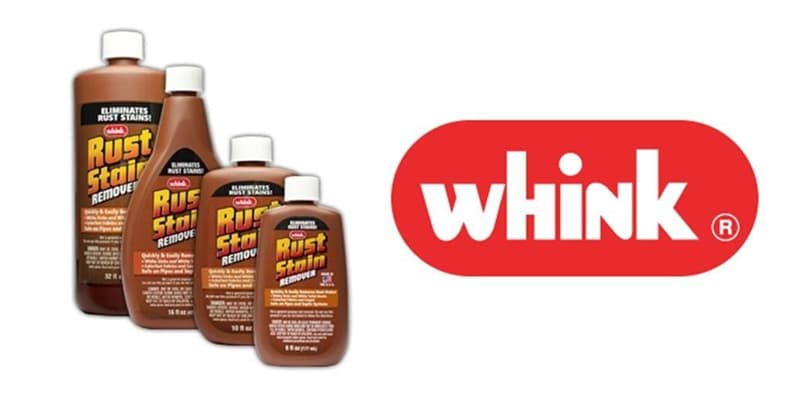
At this time, Rust-Oleum produces four sizes of Whink, including 6-, 10-, 16-, and 32-ounce bottles. You can find these bottles in the cleaning aisle at your local hardware store or online.
Whink Rust Stain Remover Review
Whink is often referred to as the rust remover in the little brown bottle. It’s a cult favorite that’s backed by hundreds of five-star reviews. With that said, we are never willing to stand behind a product without testing it for ourselves. As such, we tried this popular stain remover on some of our most stubborn household rust stains. Read along to see how well Whink performs and find out if it gets our official seal of approval.
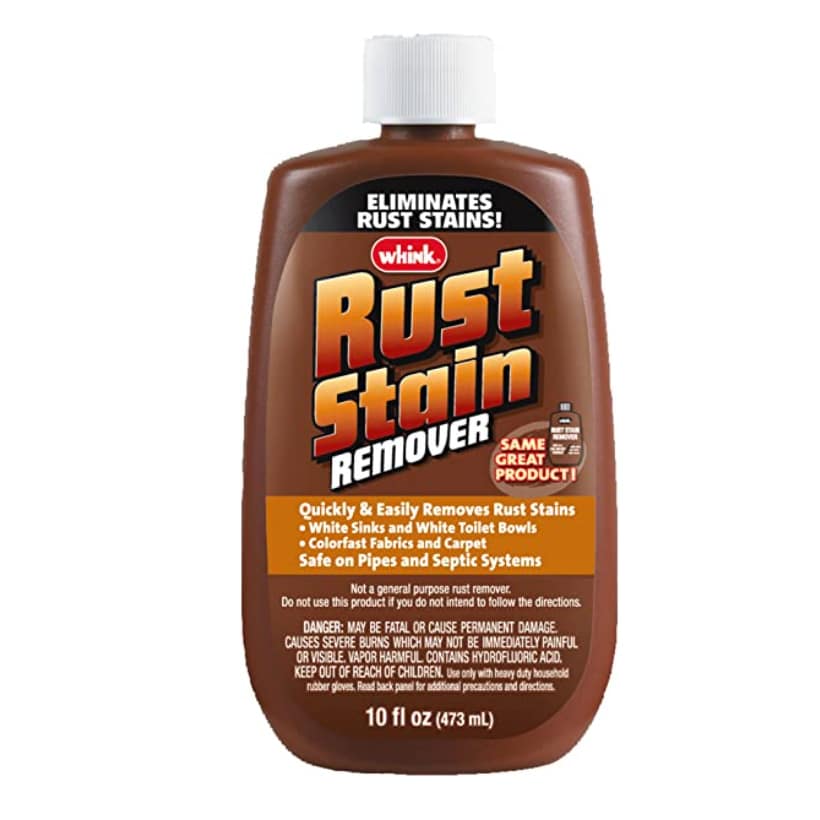
Whink Rust Stain Remover Ingredients
Whink Rust Stain Remover contains: Deionized Water q.s. 100% Hydrofluoric Acid 1-3% Ethylenediaminetetraacetic Acid (EDTA) 0-1%, Trisodium Salt 100-200 ppm, Calcium Chloride 100-700 ppm, sodium Fluosilicate Pentahydrate 100-500 ppm Iron(II) Sulfate Heptahydrate 80-160 ppm.
Is it safe?
Whink Rust Stain Remover is about 97% water, and 3% hydrofluoric acid. If you’re familiar with the MSDS for Hydrofluoric Acid, then you know that it can eat through your skin and into your bones. However, this product has been reformulated to a less aggressive state.
Accordng to Whink’s FAQ : The newer solder formulations are much more “friendly” than the older ones were (due to lead), however, they still have some degree of toxicity in them. Because of this we recommend following EPA guidelines listed below: Do not use in areas where there is open food or water consumption without proper ventilation
- Do not mix with other chemicals – especially based products
- Wear rubber gloves and eye protection
- Keep out of reach of children Do not use near open flames or sparks
- We recommend that you wear rubber gloves and protective eyewear. We feel completely safe using this product in our shop, but we have to abide by the law. Its best to follow the rules everyone else has to (and apply them to yourself as well).
Packaging
Our first impression was that Whink looked outdated. It comes in an opaque brown bottle with a retro label. It is designed to be used on white sinks, white toilets, colorfast fabrics, and carpets. We assume this means it’s also safe to use on other white porcelain surfaces, such as bathtubs and pottery. The label goes on to say that Whink will not damage plumbing or septic systems.
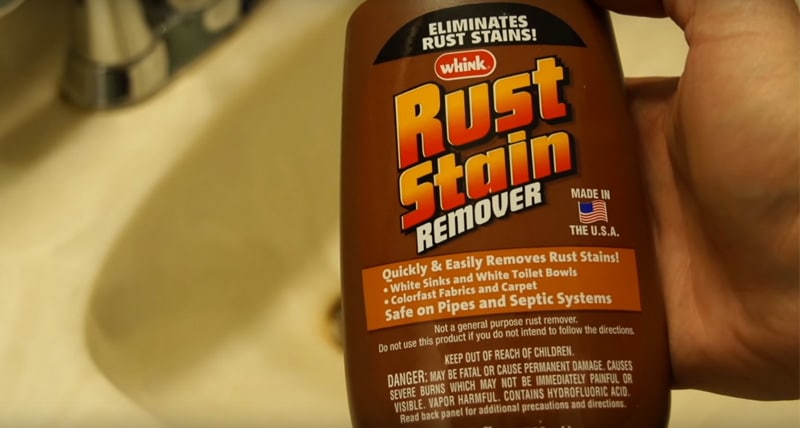
The label also indicates that Whink Rust Stain Remover is not an all-purpose cleaner. What’s more, there is a block of text on the bottle that warns consumers to abstain from using Whink Rust Stain Remover if they are not willing to comply with all of the manufacturer’s instructions. Considering the cleaner’s caustic nature, we appreciate the detailed instructions.
According to the manufacturer, Whink contains a solution of hydrofluoric acid and water. These compounds work together to eat away at rust. With that said, Whink should always be kept out of the reach of children and animals. What’s more, users should always wear gloves, protective clothing, and even face shields when working with Whink. Improper handling can lead to skin damage, respiratory issues, or more serious harm.
What the bottle does not state is that Whink cannot be used on metals. Its acidic properties will eat away at everything from aluminum to zinc. On top of that, you need to avoid matching Whink up with oxidizers, acids, and alkalies.
Application
We found it incredibly easy to use Whink. Apply a few drops of the solution to a stained area and wait for the magic to happen. You may need to repeat this to eradiate stubborn stains. When you are finished, simply rinse the stained area with cold water.
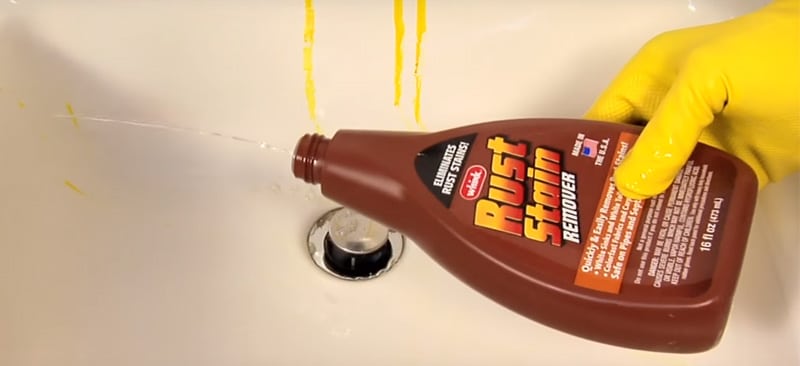
The only frustrating thing about using Whink is that it poses some serious health hazards. To avoid incurring injuries, always wear industrial-strength rubber gloves when handling Whink. What’s more, keep your Whink out of the reach of children and pets.
We love the fact that Whink didn’t require us to scrub the stain. For one, we were happy to limit our direct contact with this corrosive acid. What’s more, we were content knowing that Whink was doing all the heavy lifting. What could be better than instant results?
We were also very relieved to find that Whink had no odor. After readings about the corrosive nature of hydrofluoric acid, we were sure it would boast a harsh chemical scent. Don’t let the cleaner’s lo-profile smell fool you! Only use it in a well-ventilated area, as the fumes should not be inhaled.
Effects
In our first test, we employed Whink on a couple of aged hard water stains in our bathroom. We live in a rural area and have mineral-rich well water. As such, we’ve had no choice but accept brown drains as a part of our aesthetic.
First, we tried Whink on a rust ring on the inside of our white porcelain toilet. We followed the directions closely, squirting a small amount of Whink just above the waterline. After we flushed the toilet, we noticed that the ring, which had been there for several years, disappeared!
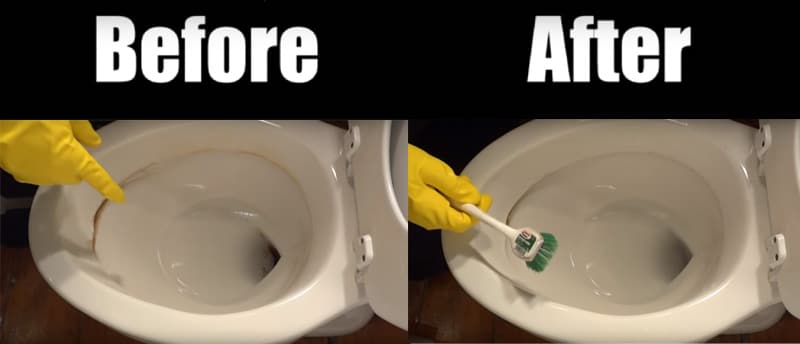
In our next test, we tried Whink out on the rust stains on our antique white porcelain bathroom vanity. The sides of the sink boasted ugly brown blemishes from the previous owner’s ancient metal towel rack. Since the marks were on a vertical surface, we used a disposable cleaning pad to apply a small amount of Whink to the stained area. Whink boasts a thin liquid consistency that drips when it is applied to smooth, flat surfaces.
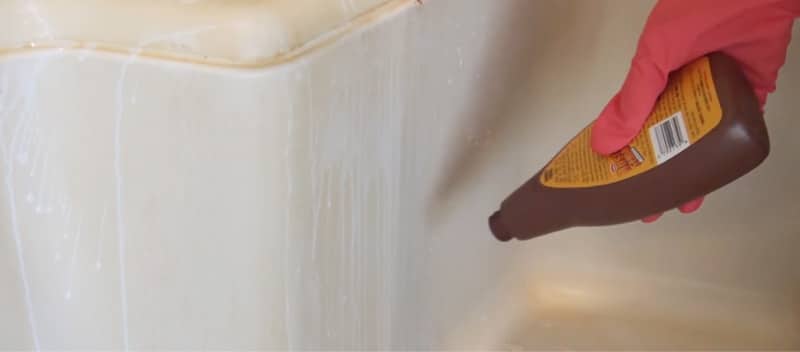
At first, the stain appeared to fade. However, after a few more applications, the stain could no longer be observed. We rinsed it with cold water.
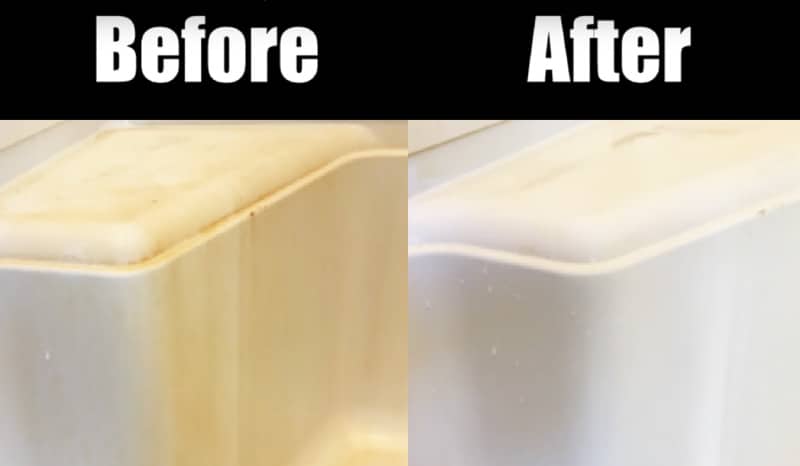
After that, we decided to test Whink on some fabric-based rust stains. We had an old cotton quilt that had acquired a rust stain after being placed under a cast iron pan during our recent move. The rust stain was large and unsightly, so we didn’t have high hopes. However, Whink came through in a pinch and cleared up the entire issue.
We also tested the cleaner on a small rust stain on our beige playroom carpet. We weren’t sure of the source of the stain, but there was no mistaking the burnt orange color. Whink was able to lift the rust stain in just a few applications. We blotted the surface of the carpet with moist paper towels. Then, we checked for discolorations. There was no indication that the carpet had ever been stained or treated with harsh chemicals.
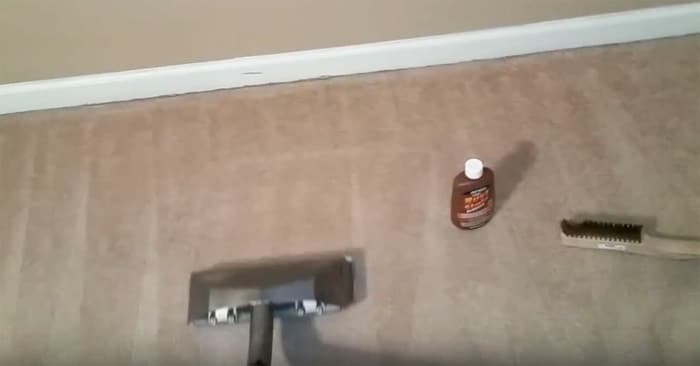
While we weren’t willing to try Whink on any additional surfaces, we were very satisfied with our limited test results. This cleaner was all that we expected and more. For just a few dollars, Whink can dramatically improve the look of your home. Now, we know why so many cleaners swear by this solution!
When we finished our tests, we were surprised to see how little of the Whink we had used. It felt like the bottle was still full even after we’d cleared up several stains. We were also relieved to revive several items we were ready to discard. The unsightly rust stains had to lead us to believe our bathroom sink and toilet needed replacing. We couldn’t be more excited to give them a new life!
How to Use Whink Rust Stain Remover
Whink Rust Stain Remover is an industrial-strength rust remover that utilizes aggressive acid to remove stubborn rust stains. It dissolves rust by turning it into a soluble substance. In doing so, it enables users to rinse away their rust stains just moments after their initial application.
According to the manufacturer, you can use Whink Rust Stain Remover on a variety of surfaces. However, it is by no means an all-purpose rust remover. It is intended to be used on white sinks, white toilets, colorfast fabrics, and colorfast carpets.
The manufacturer recommends wetting the surface of the stain before applying Whink. Then, all you have to do is place a few droplets on the surface of the stain. The squeeze bottle offers a pretty precise application. However, we recommend keeping a pair of industrial-strength rubber gloves and a clean applicator on hand. You will want to spread Whink Rust Stain Remover to ensure that it covers each part of your rust stain.
Hydroflouric acid should act rapidly. However, you may need to wait a few minutes for the acid to penetrate deep-set stains. If you notice that the stain is faded but not completely eradicated, apply a second or third coating of Whink.
When you are fully satisfied with the results, use cold water to rinse the surface of the stained area. Remember, hydrofluoric acid is incredibly dangerous to people and animals.

FAQ
What is the active ingredient in whink rust stain remover?
The active ingredient in whink rust stain remover is hydrofluoric acid. This is a strong acid that is effective at removing rust stains from surfaces like concrete, stone, and ceramic. It can also be used to remove tough stains from clothes and fabrics.
What is whink rust stain remover used for?
Whink rust stain remover is primarily used for removing rust stains from hard surfaces like concrete and stone. It can also be used to remove tough stains from clothes and fabrics.
Is whink Rust Stain Remover safe?
Hydrofluoric acid is a strong acid and can be dangerous if it comes into contact with skin or eyes. It is important to read the directions on the product label carefully and use the product as directed.
What is the best product to remove rust stains?
Whink Rust Stain Remover is a strong acid that is effective at removing rust stains from surfaces like concrete, stone, and ceramic. It can also be used to remove tough stains from clothes and fabrics.
Overall Thoughts
We were pleasantly surprised with the effectiveness of Whink Rust Stain Remover. We now understand why this product has been able to dominate store shelves since 1947. At first, we were frustrated by Whink limited cleaning capabilities. What’s more, we weren’t looking forward to dealing with a harsh chemical compound.
However, after a few applications, we considered ourselves Whink fans. This incredible cleaning solution offered instant results. In less than an hour, Whink helped us to revive our toilet, bathroom sink, playroom carpet, and quilt. Still, we had plenty of solution left in the bottle.
The best part was that we barely got our hands dirty. We simply poured or applied Whink on a stain and let it do its thing.
However, for us, Whink’s ability to eradicate hard water stains has made it one of our top-ranked cleaning chemicals.
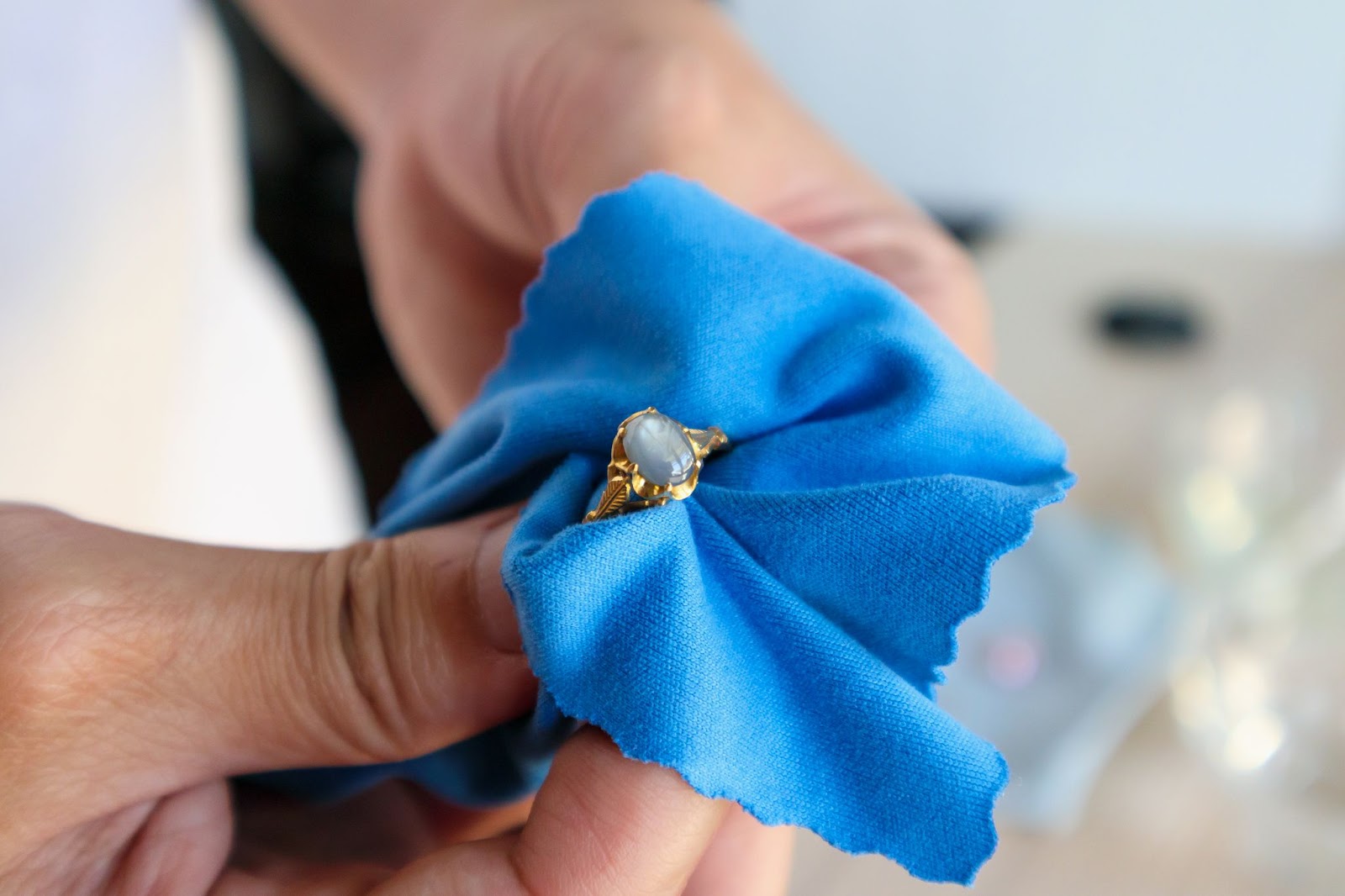
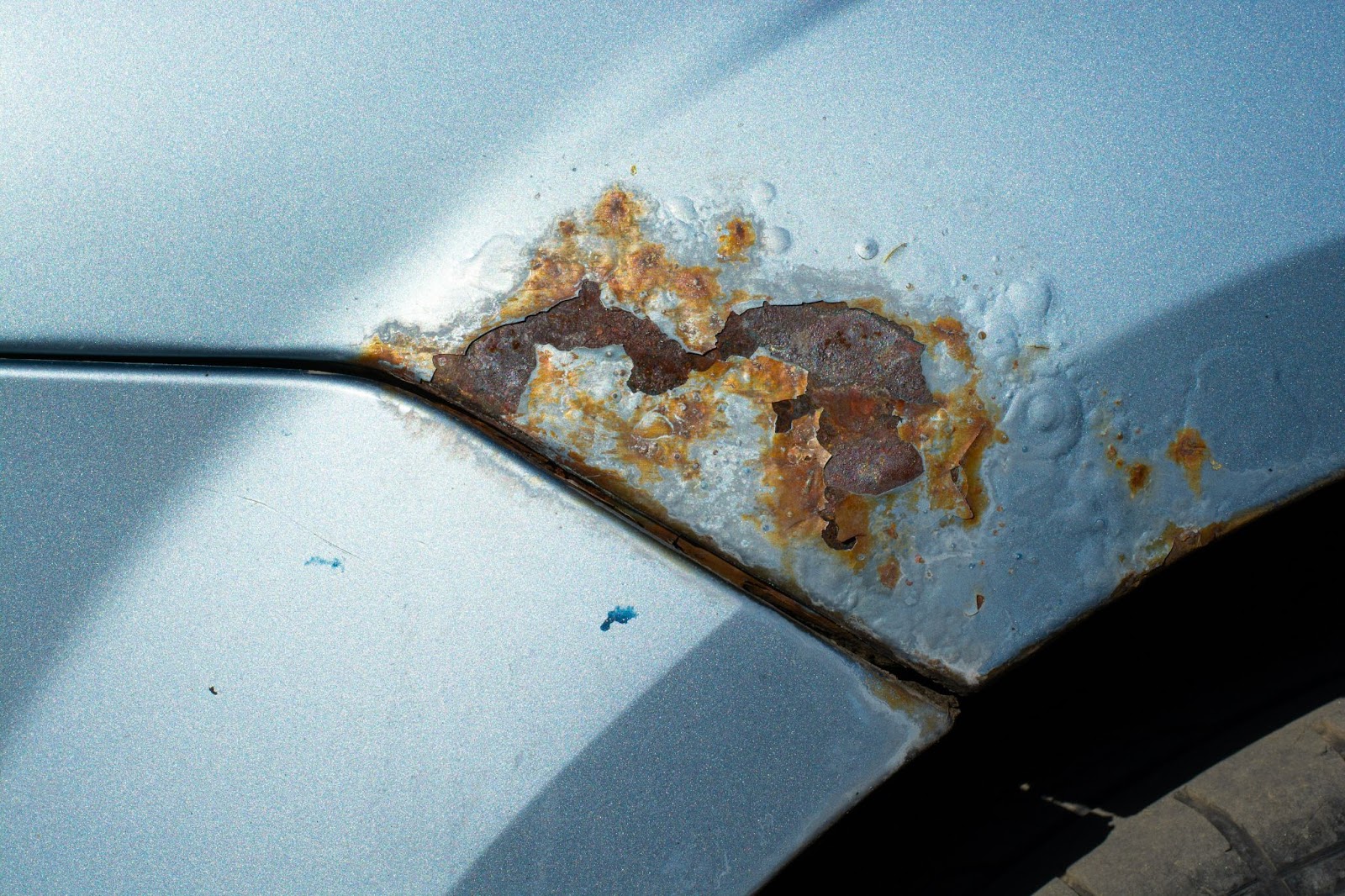
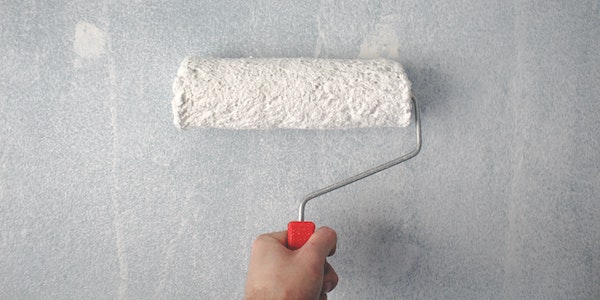
Thanks for the recommendation and review. We used Whink on a carpet rust stain left by an old storage trunk. Removed the stain 100% within 2 minutes. Rinsed, dried and carpet is good as new. Great product.
Thanks for the comment. Glad we could help. I wonder if you might publish a brief note to your readers about how you applied it to the carpet, as it is very effective for rust stains in clothing when used as a pre-treatment.
Can Whink rust remover be used on hard water stains on a fiberglass shower?
Yes, Whink rust remover can be used on hard water stains on a fiberglass shower. First, wet the area with warm water. Then, apply the rust remover according to the instructions on the bottle. Allow it to sit for several minutes before rinsing it off. You may need to repeat this process a few times to remove all of the stains.
Can I use this on my griddle? Would it be safe to cook on after use?
Yes, Whink Rust Stain Remover can be used on griddles. It is safe to cook on after use.
I used Whink on my colored tile and it left a white film. Any suggestions on removing the film?
I used Wink on a cotton sweater and now I have stains everywhere that I used it. Now what?
I’ve used Whink successfully so many times but now…. I used it on a white cotton sweater and it left stains everywhere. How can I neutralize the stains?…. Vinegar, alcohol…. ?
Damage is probably already been done to the fabric and the stain is probably permanent. To neutralize the acid, baking soda would be a good choice
I stuck some knife’s in a glass with a little wink. And forgot about them. Not there are black on the tips. Any ideas how to remove this?